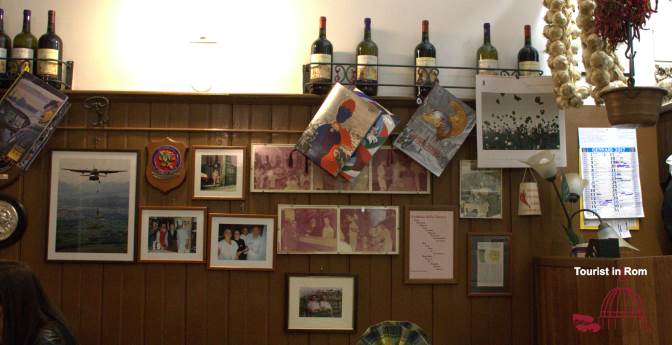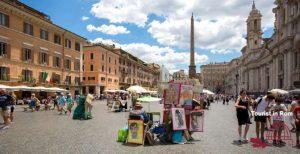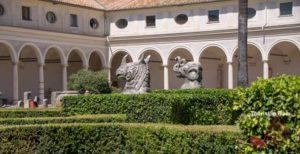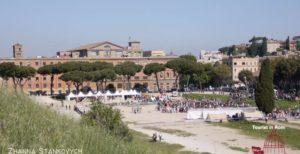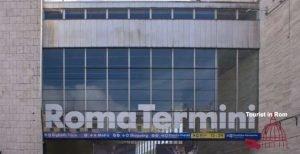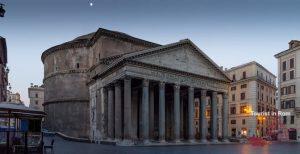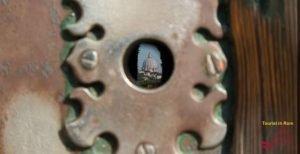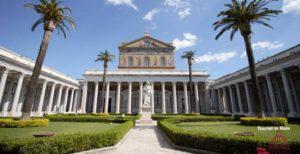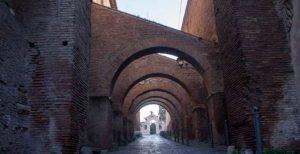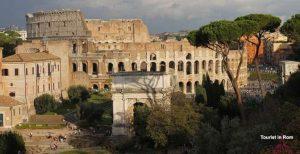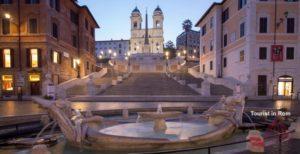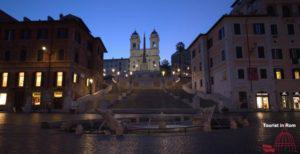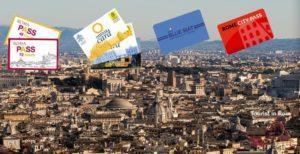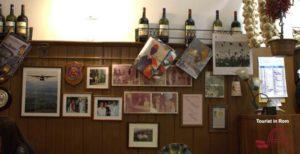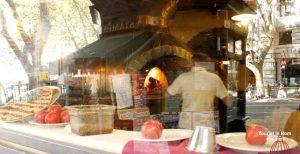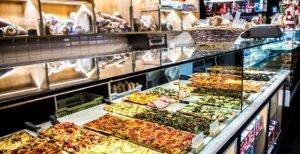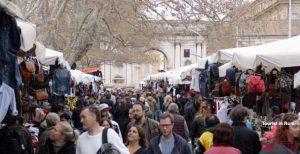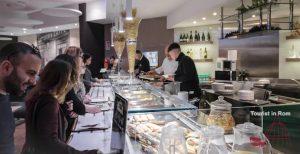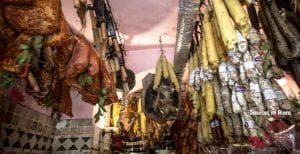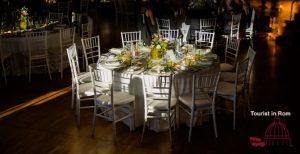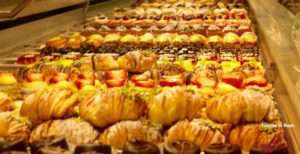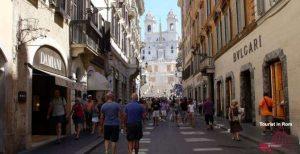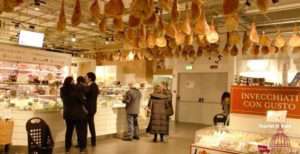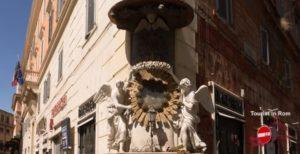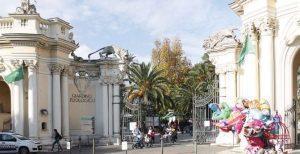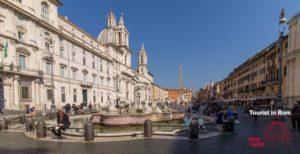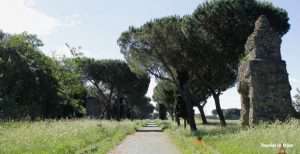The delicious Roman cuisine offers not only pasta and saltimbocca. Learn to decipher the menu and eat in Rome like the Romans.
Roman cuisine is a traditional and sometimes heavy cuisine. The traditional Jewish cuisine in the ghetto gives it a Central European print. The typical names of the food are not easy to translate and unfortunately you will often find misleading translations. In this little guide we explain the most important dishes.
Partner links help us to provide our information free of charge. For completed bookings we receive a commission – at no extra cost to you! More
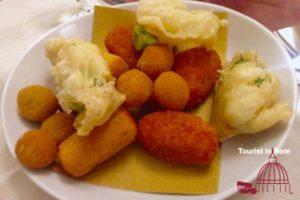
A typical Roman dinner or a festive lunch usually consists in two or three initial courses, the main course and the dessert.
For appetizers, start with the antipasti. There are mostly cold cuts and cheese, deep-fried preparations or anchovies. This is followed by an intermediate course with warm legumes in clay pots, the “Cocci”, and then a pasta dish.
The main dish in Roman cuisine is either a meat dish, also offal, or cod. There are vegetables or salad as a side dish.
For dessert there are creams or pastries. Fruit or ice cream do not necessarily belong to the Roman cuisine, but are often on the menu nowadays.
Antipasti
What would a Roman meal be without antipasti? They come hot or cold. The choice is huge. These little treats are meant to whet the appetite and they bridge the wait until the freshly prepared pasta is served. Roman restaurants are always coming up with new delicious creations.
The antipasti of the Roman tradition include cold appetizers such as
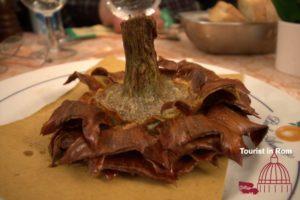
- the tagliere, a mixture of air-dried sausage, ham and cheese – salumi, prosciutto e formaggio.
- Ricotta alla Romana is a fresh cheese made from sheep’s milk (ricotta di pecora) – there is also ricotta made from cow’s milk (ricotta di mucca) and ricotta made from goat’s milk (ricotta di capra).
- A fresh buffalo mozzarella (mozzarella di bufala) from central Italy is also often served.
- grilled bread, la bruschetta, is served with olive oil and garlic, with tomatoes or with spreads from the Apennines.
- Alici sotto sale: anchovies pickled in salt.
Preserving in oil has a long tradition. The most famous Sottoli are
- Carciofi alla Romana: Artichokes boiled in oil
- Alici marinati: marinated anchovies. They are often served with butter.
- Pickled olives
Now let’s move on to the hot appetizers. The most famous are the fritti, the fried appetizers. Among the fritti are
- The Supplì: breaded fried rice rolls filled with ragù and mozzarella. Supplì is also available in other flavors, such as Cacio e pepe, Amatriciana and so on. The Sicilian kind are the Arancini, with a slightly different shape and other fillings.
- Fiori di Zucca: zucchini flowers stuffed with dough and stuffed with mozzarella and anchovies
- Carciofi alla Giudia: fried artichokes are a ghetto specialty
- Verdure fritte: various types of vegetables fried in dough, such as zucchini, carrots or asparagus.
- Olive Ascolane: breaded olives with meat filling
- Alici fritti: fried anchovies
- Filetti di baccalà: One of the staple foods of Roman cuisine is the Baccalà, cod. Deep-fried, it is eaten as an antipasto or as a main course.
- Mozzarella fritta, ovoline: mozzarella deep-fried in batter
- Crocchette di patate: potato croquettes
- Pizza fritta: deep fried pizza
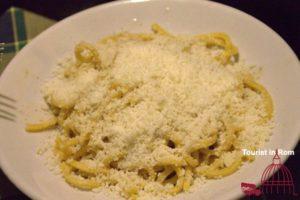
Legumes: They are served warm in clay bowls (cocci) as the second round of antipasti. Common combinations are
- Fagioli: different types of beans, either with onions and olive oil or warm in tomato sauce with Guanciale – pork cheek, pancetta – pork belly or costine – ribs
- Lenticchie: lentils
- Ceci: chickpeas
Pasta dishes
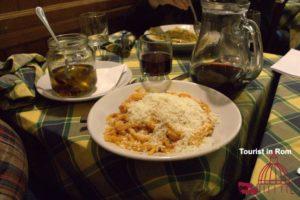
The basic recipe of Roman noodle cuisine is Cacio e pepe – pecorino (ewe’s milk cheese) and pepper.
The trick is to dissolve the Pecorino – the ewe’s milk cheese – so that it does not flocculate and stick together. The result is pasta in cheese sauce. Then pepper is rubbed over it and again Pecorino.
Adding to the Cacio e pepe Guanciale – air dried ham from pork cheek – it becomes the Gricia.
Gricia with tomato sauce is the Amatriciana. Gricia with egg sauce is the carbonara. In Rome, no cream belongs to the carbonara. The trick is to stir the egg sauce into the pasta at the right temperature. If the noodles are too hot, it becomes scrambled eggs, if they are too cold, the sauce remains too liquid.
Another Roman specialty is the Pajata. Pajata is the intestine from the milk lamb or milk calf in tomato sauce. Pajata is only available in the cold season.
Main dishes
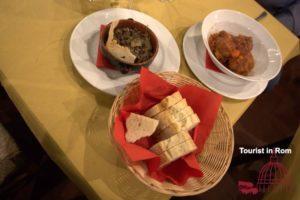
The traditional Roman recipes have their origin in the cuisine of the poor. It utilizes the leftovers that come from the slaughtering. The Romans call it the quinto quarto, the fifth quarter. This includes all the offal, the head, the tail and the legs. Even today these dishes are very popular and you should definitely have tried them. In many Roman trattorias you can find for example
- Coda alla vaccinara: oxtail in tomato sauce. The meat is very tender, but you have to be careful to avoid tomato flecks.
- Trippa: tripe white or in tomato sauce
- Coratella: offal of lamb, chicken or rabbit
- Animelle: Sweetbreads, mostly of lamb or calf
A poor man’s food is also the preserved fish that traders brought in large quantities from the north. Each country and region has its recipes, in the Mediterranean and Italy. The salted cod baccalà saved the Romans from famine. In Rome, filetti di baccalà are deep fried in a light batter.
The most famous Roman dish is saltimbocca alla Romana: veal cutlets with ham and sage. For the right taste experience, the escalopes must be nice and thin so that they harmonize well with the ham and sage. In the past, the sage leaf was placed under the ham.
The most common side dishes are
- Cicoria: chicory waved in the Pan, very bitter
- Spinaci: spinach waved in the Pan
- Patate al forno: baked potatoes
- Salad
- In the winter the typical Roman Puntarelle – raw chicory salad with anchovies and garlic
Desserts
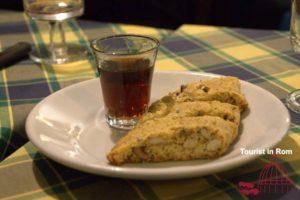
The Roman cuisine knows no special desserts. In the Carnival, there are special pastries, for example the Bignet di San Giuseppe with cream filling, deep-fried or out of the oven, or that Frappe, fried dough flakes with lots of sugar. In addition, you can find Tiramisù, Panna cotta, Crema Catalana or Creme Caramel in Rome. Often one finds also cake, particularly the Torta della nonna, a pastry with a cream filling and pine nuts or a Crostata, a shortcrust pastry base with jam filling.
Drinks
A good wine is part of the Roman cuisine. Many trattorias offer a well-kept house wine served in Carafes. You can order a quarter, half a litre or 1 litre of white wine or red wine.
Romans also like to drink beer. Peroni has been brewing in Rome since 1864. However, beer on tap is rare in Roman restaurants. The small beer – la birra piccola – usually has 0.2 l, the big beer – la birra media – usually has 0.4 l. In many restaurants there is also beer in carafes of 2 l.
